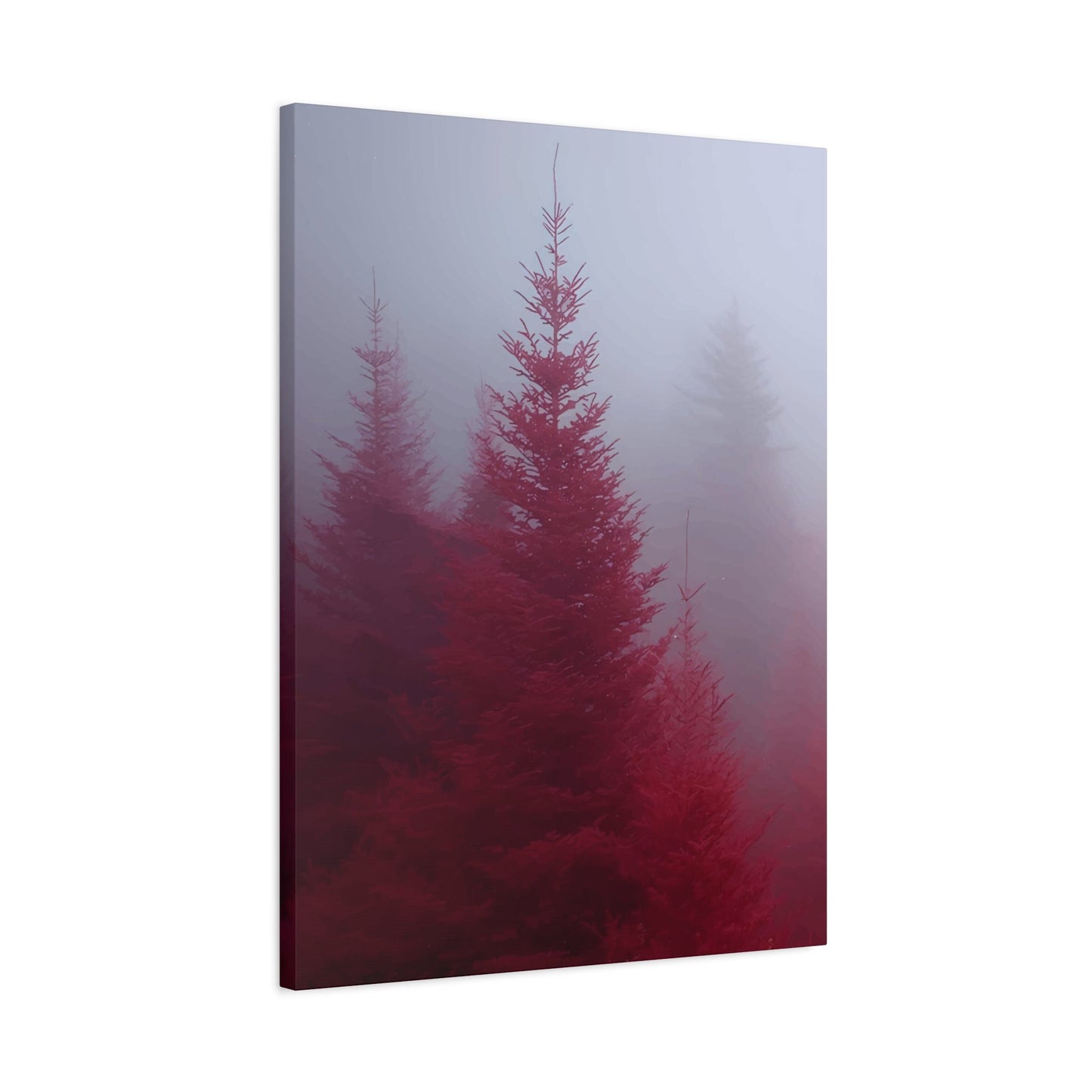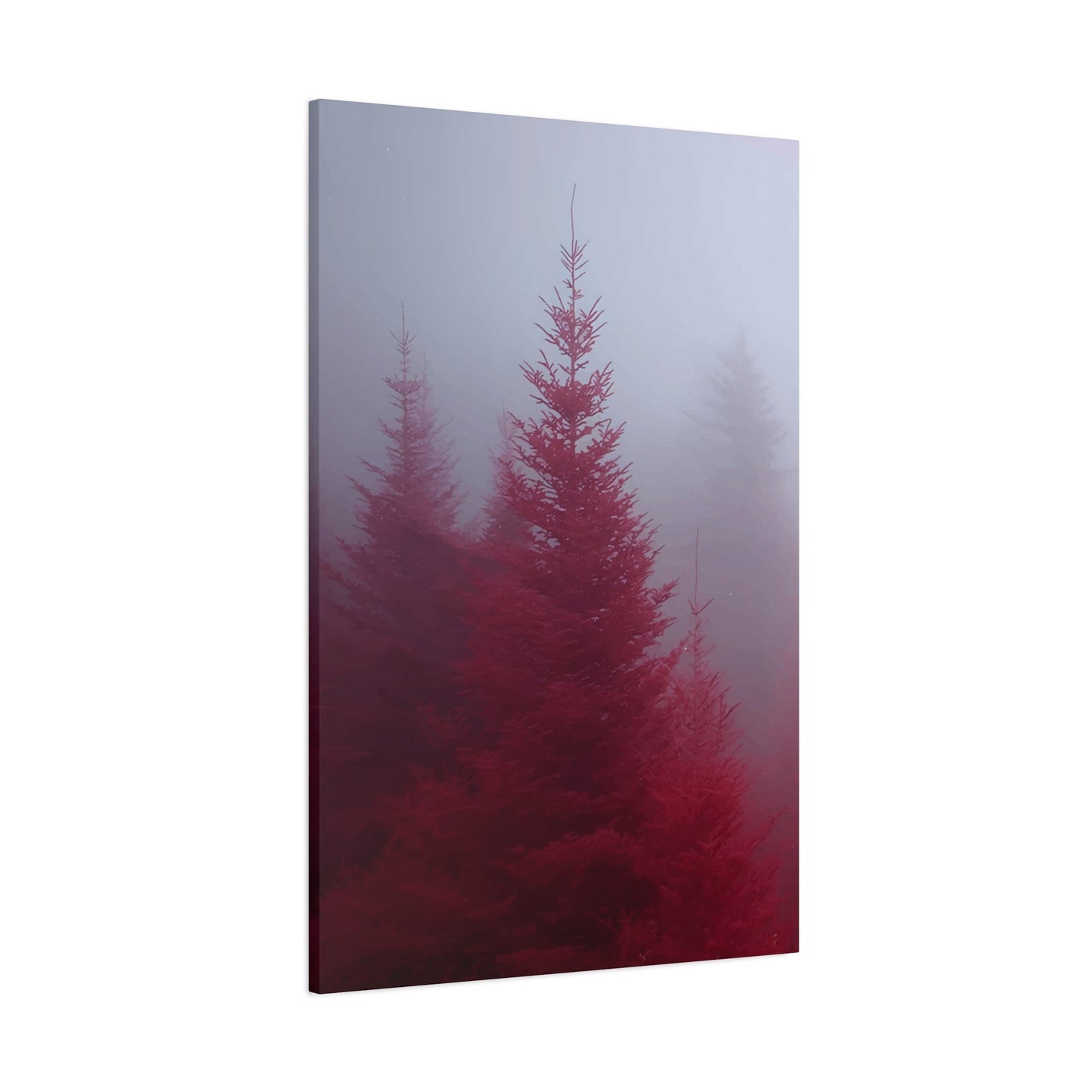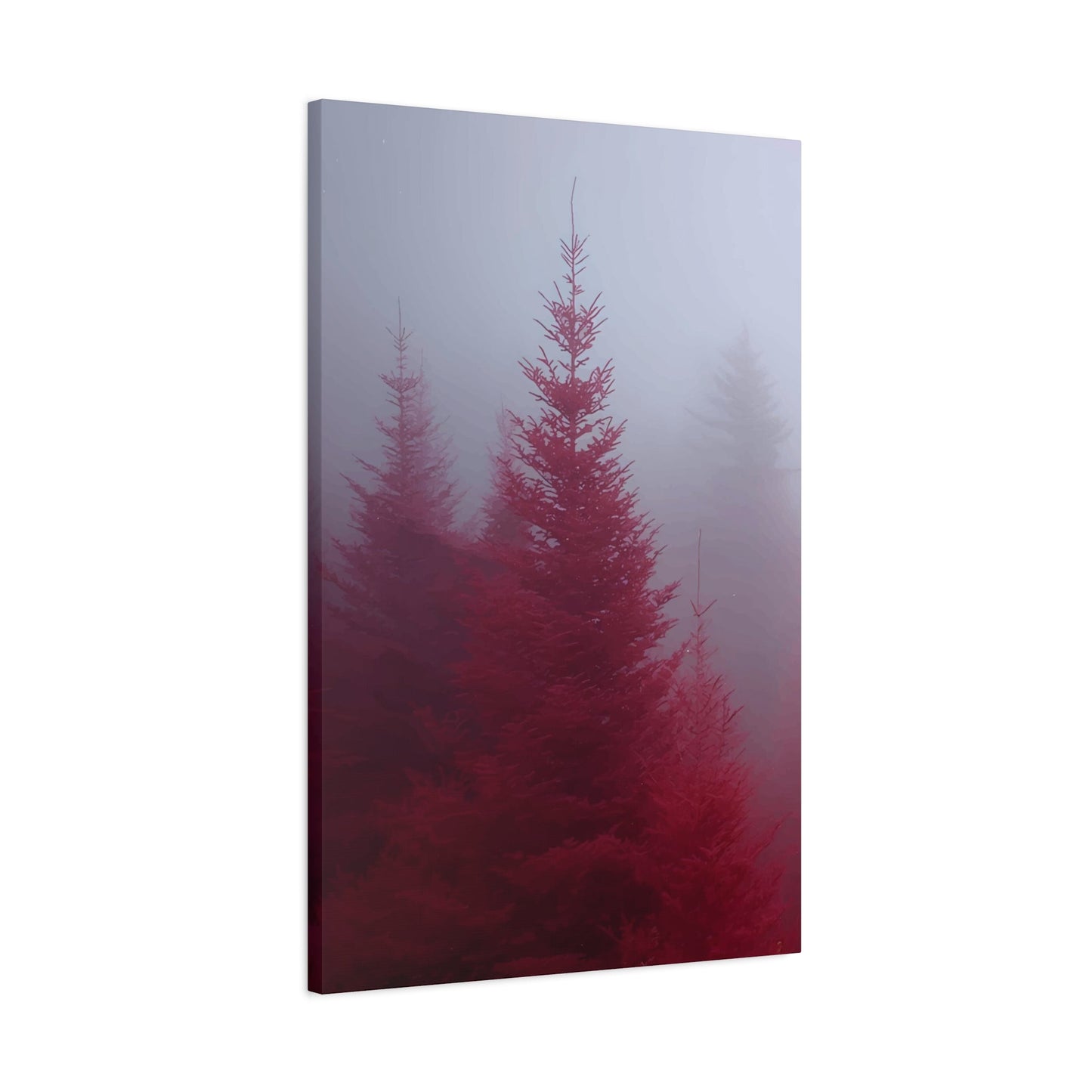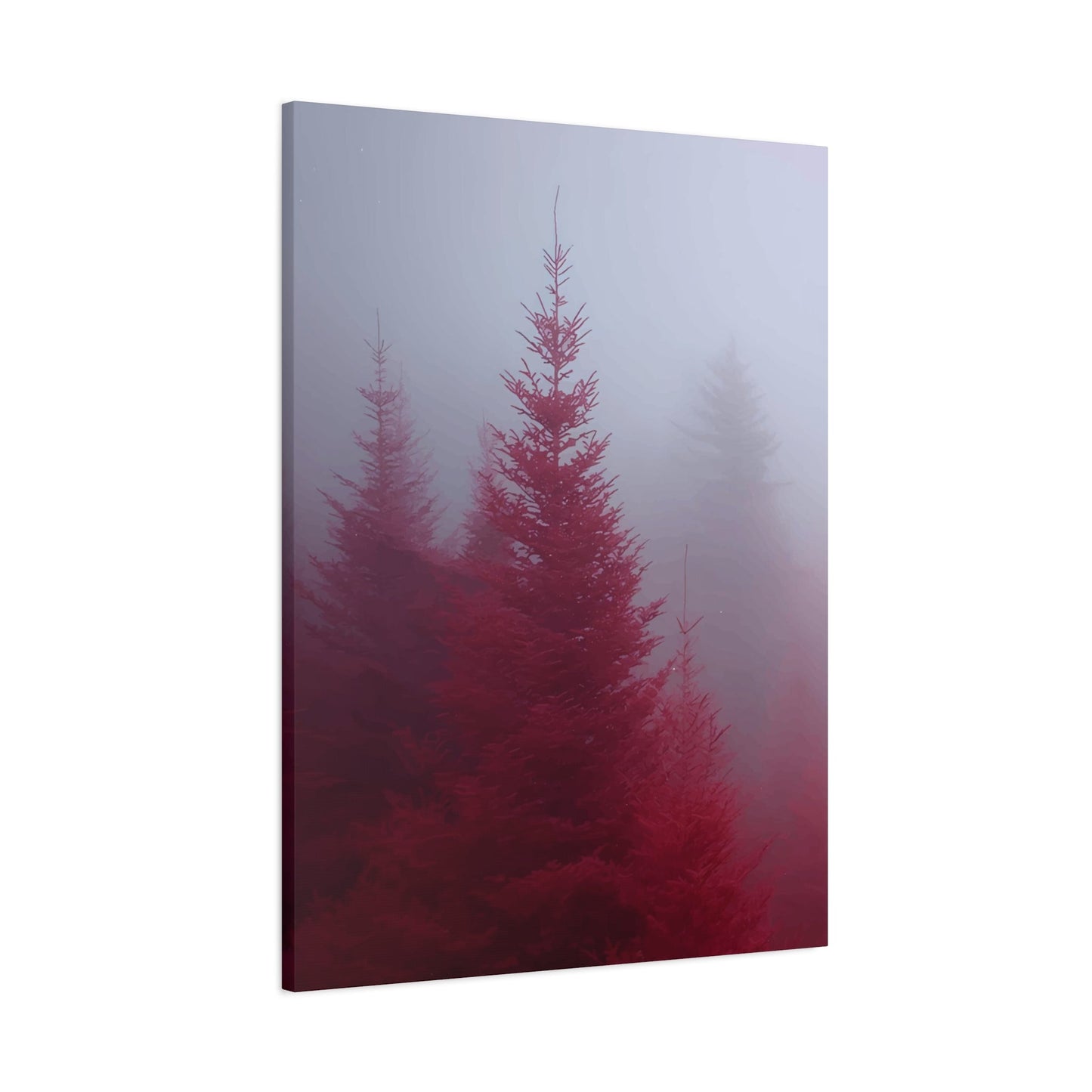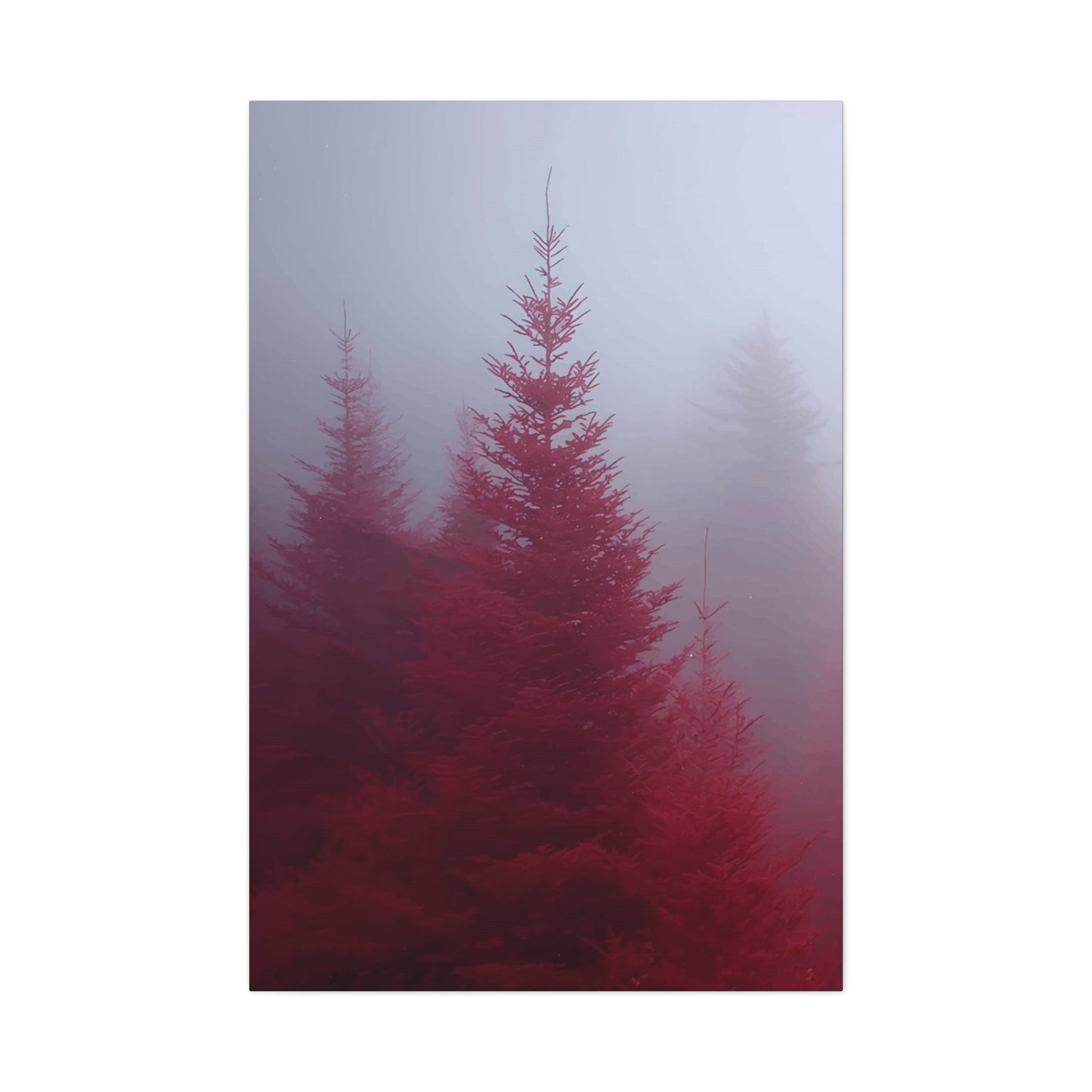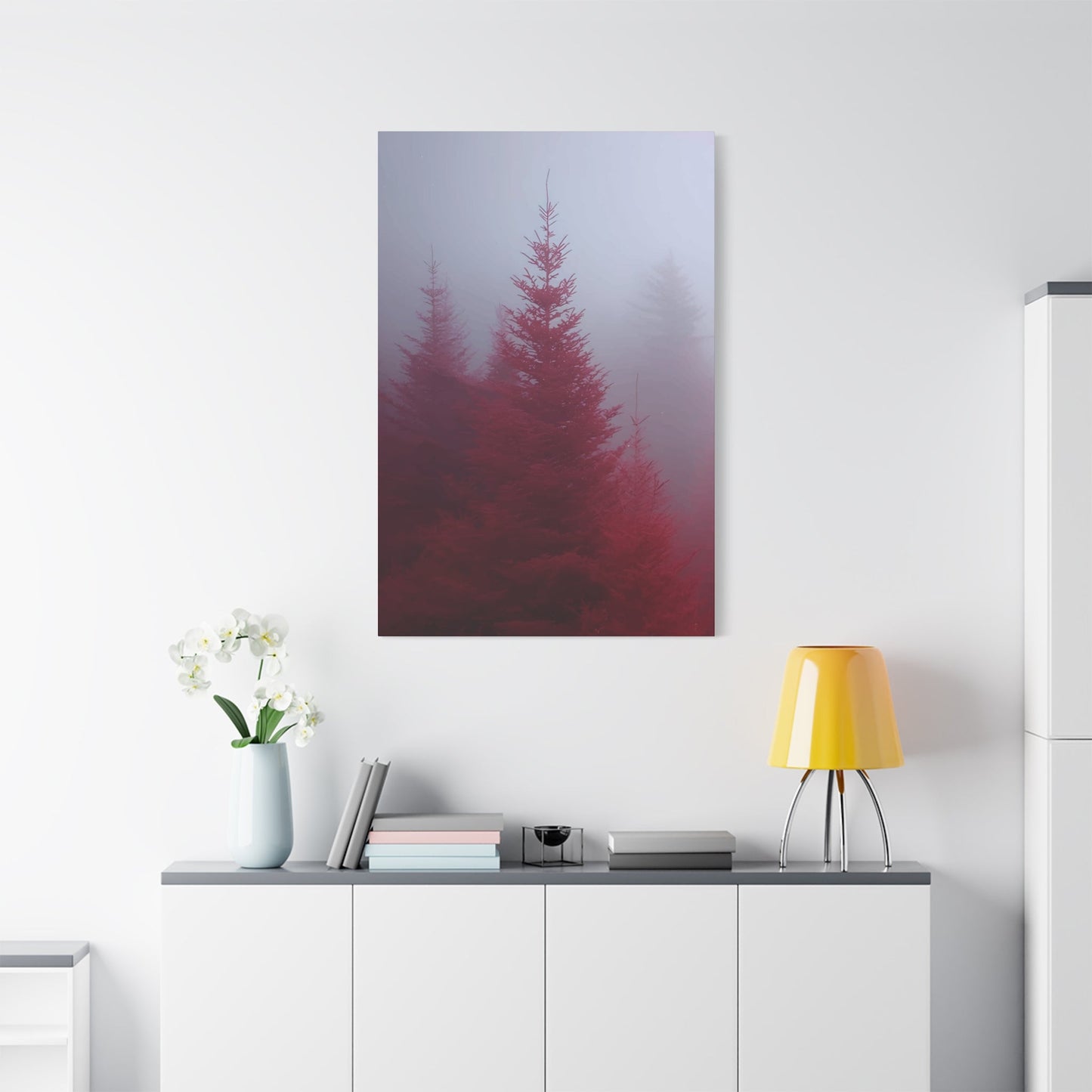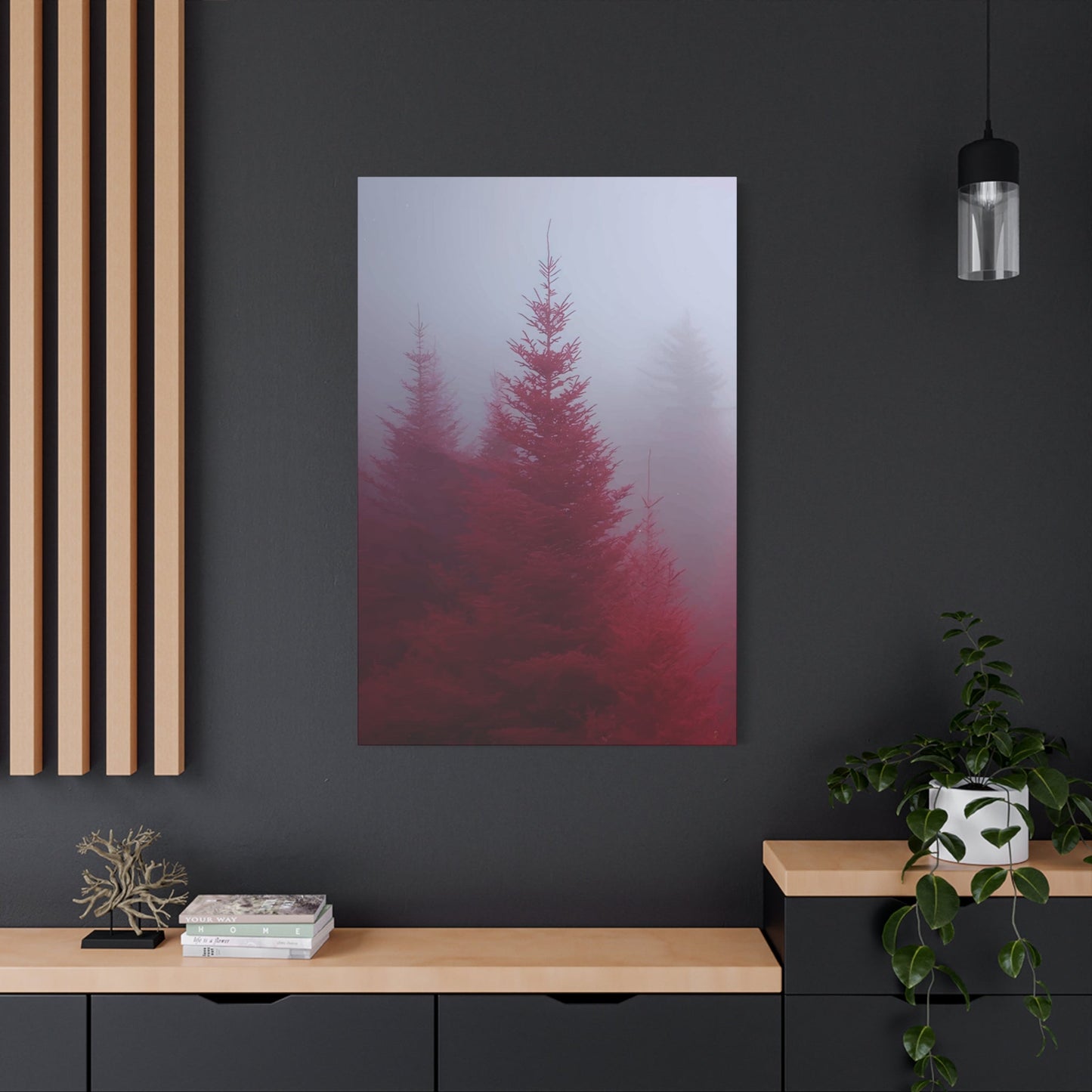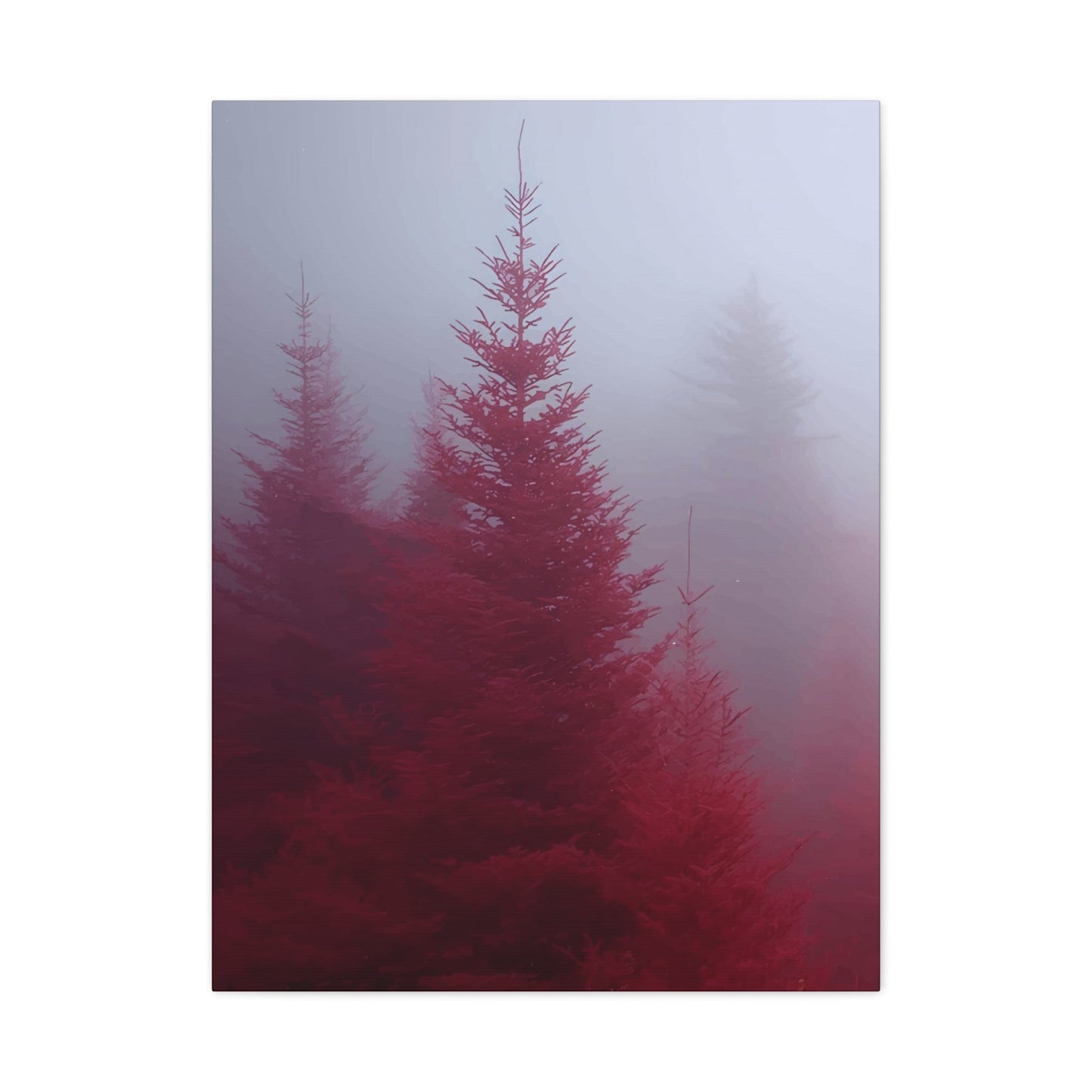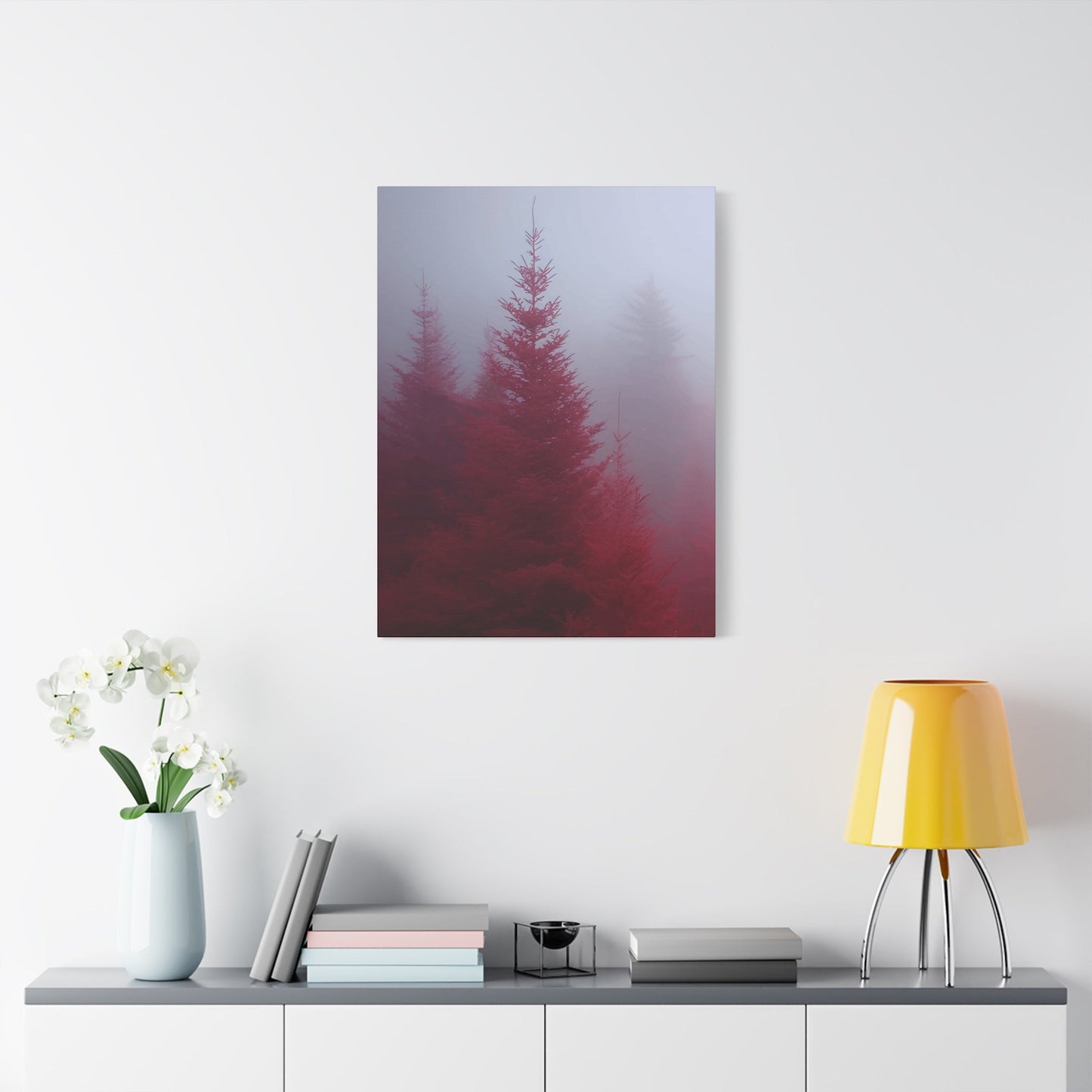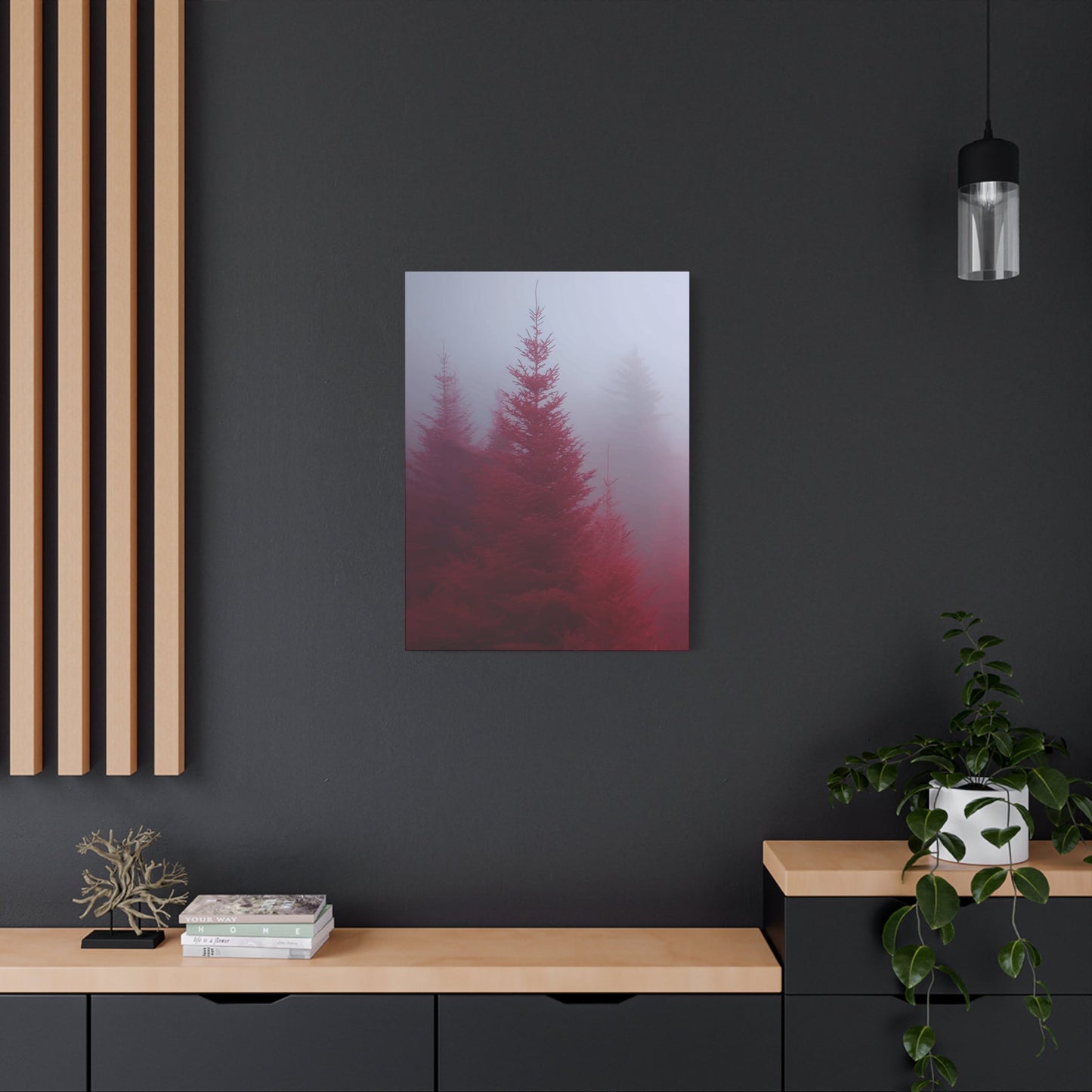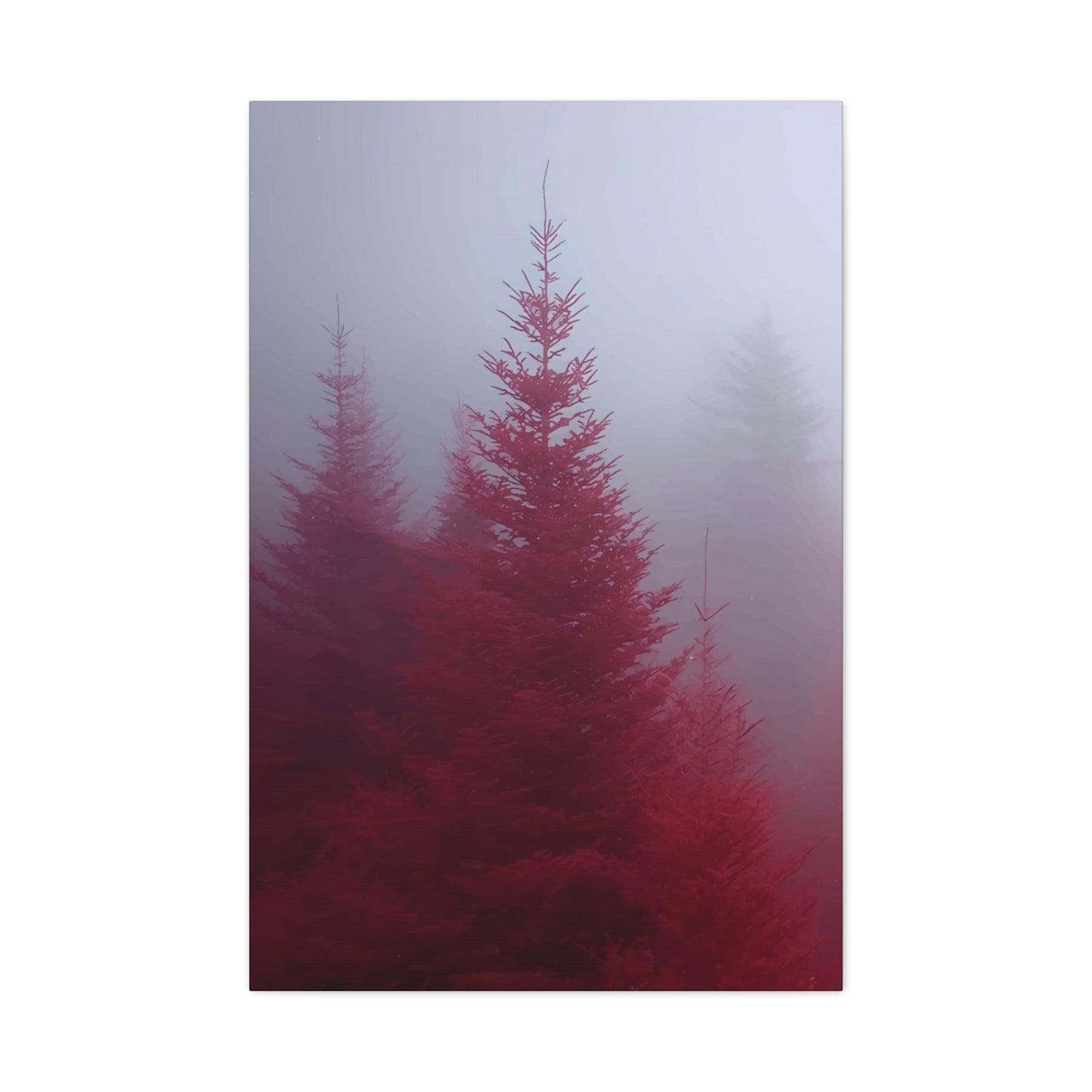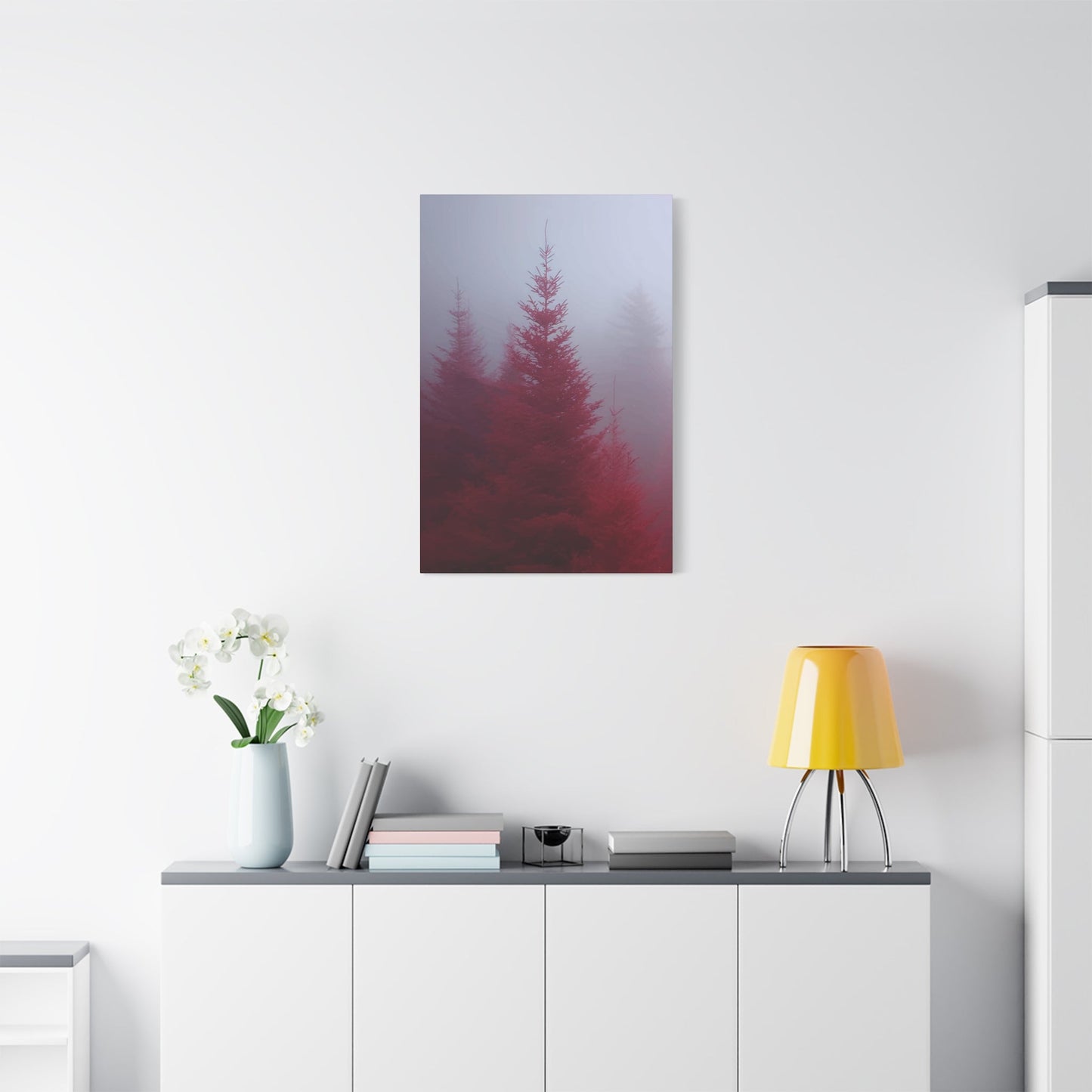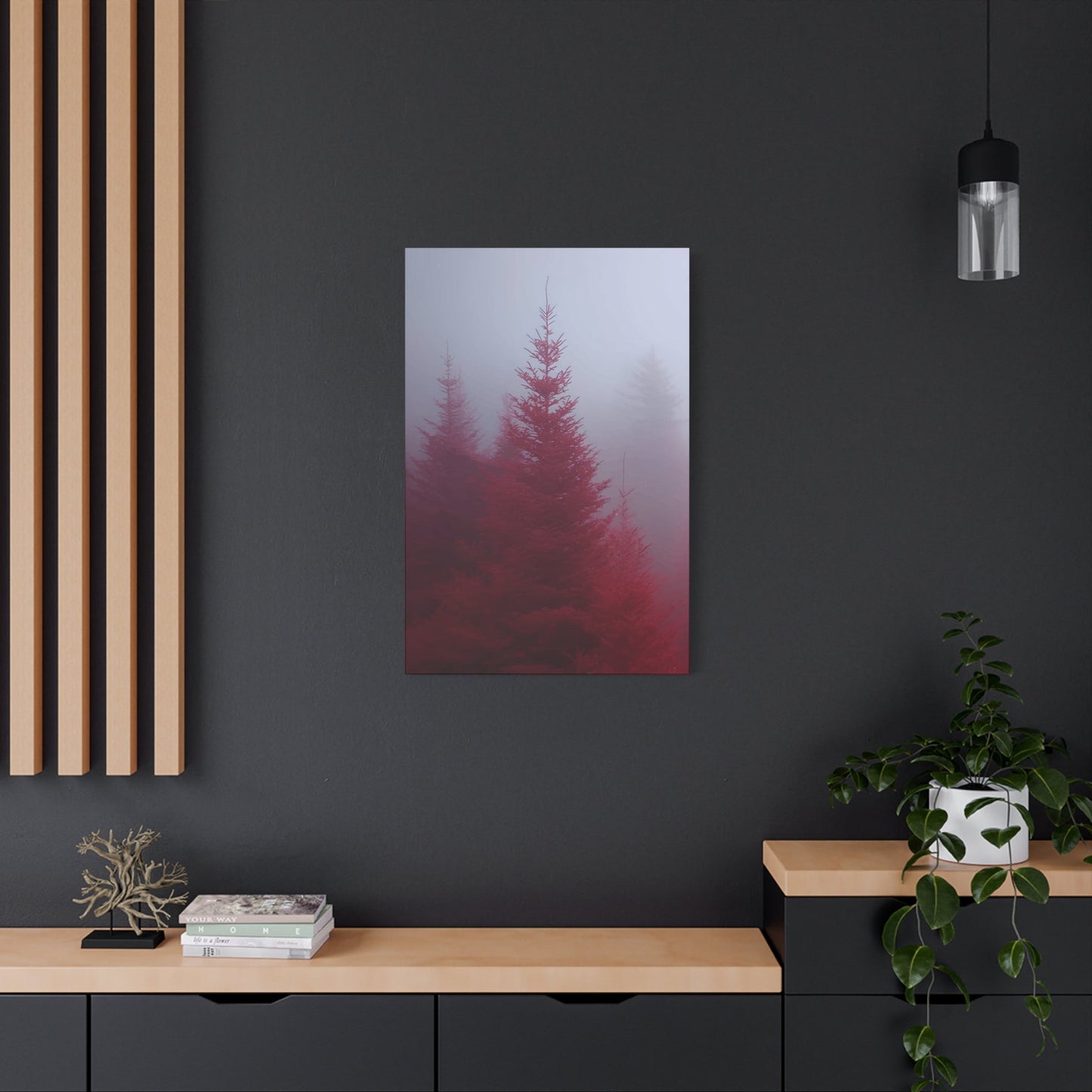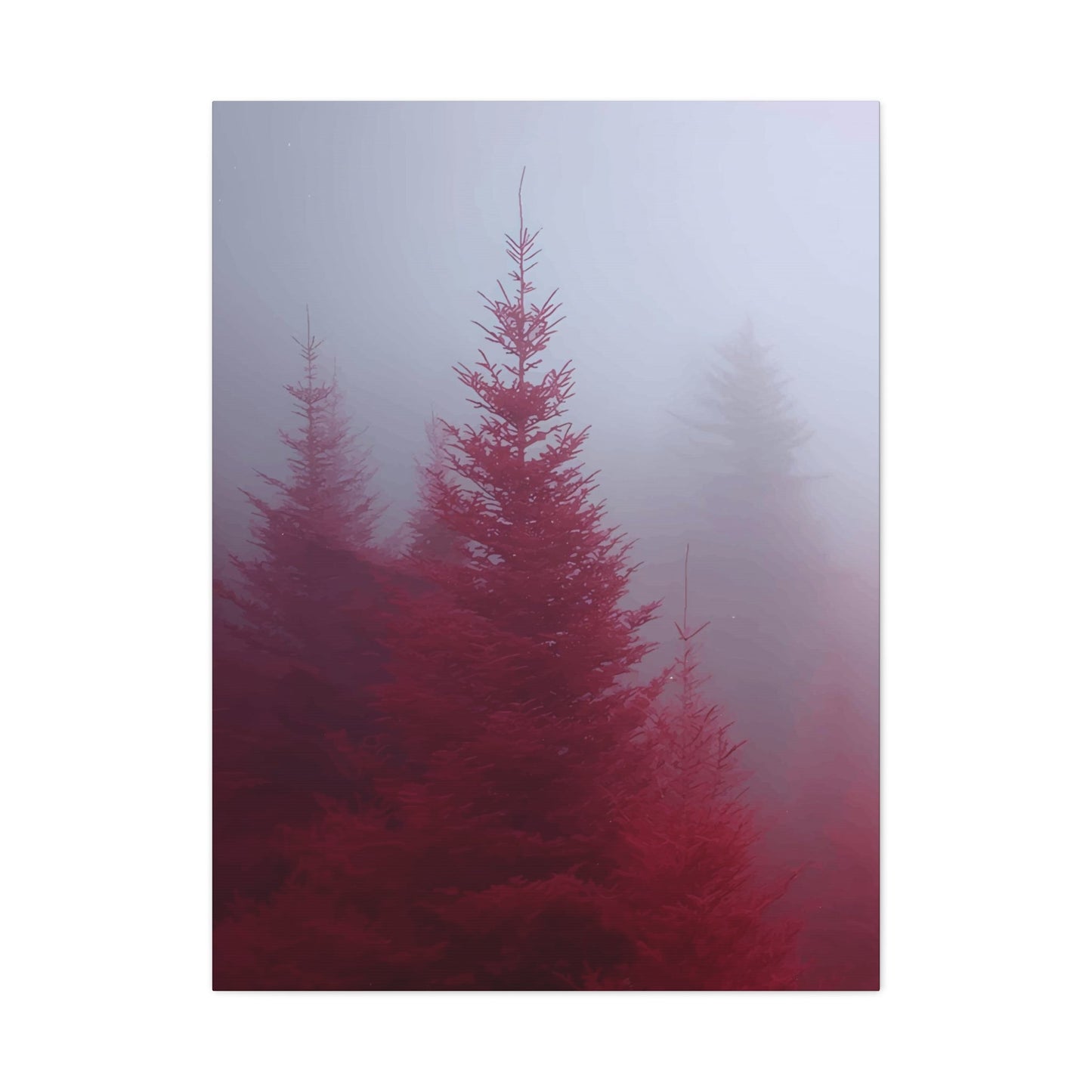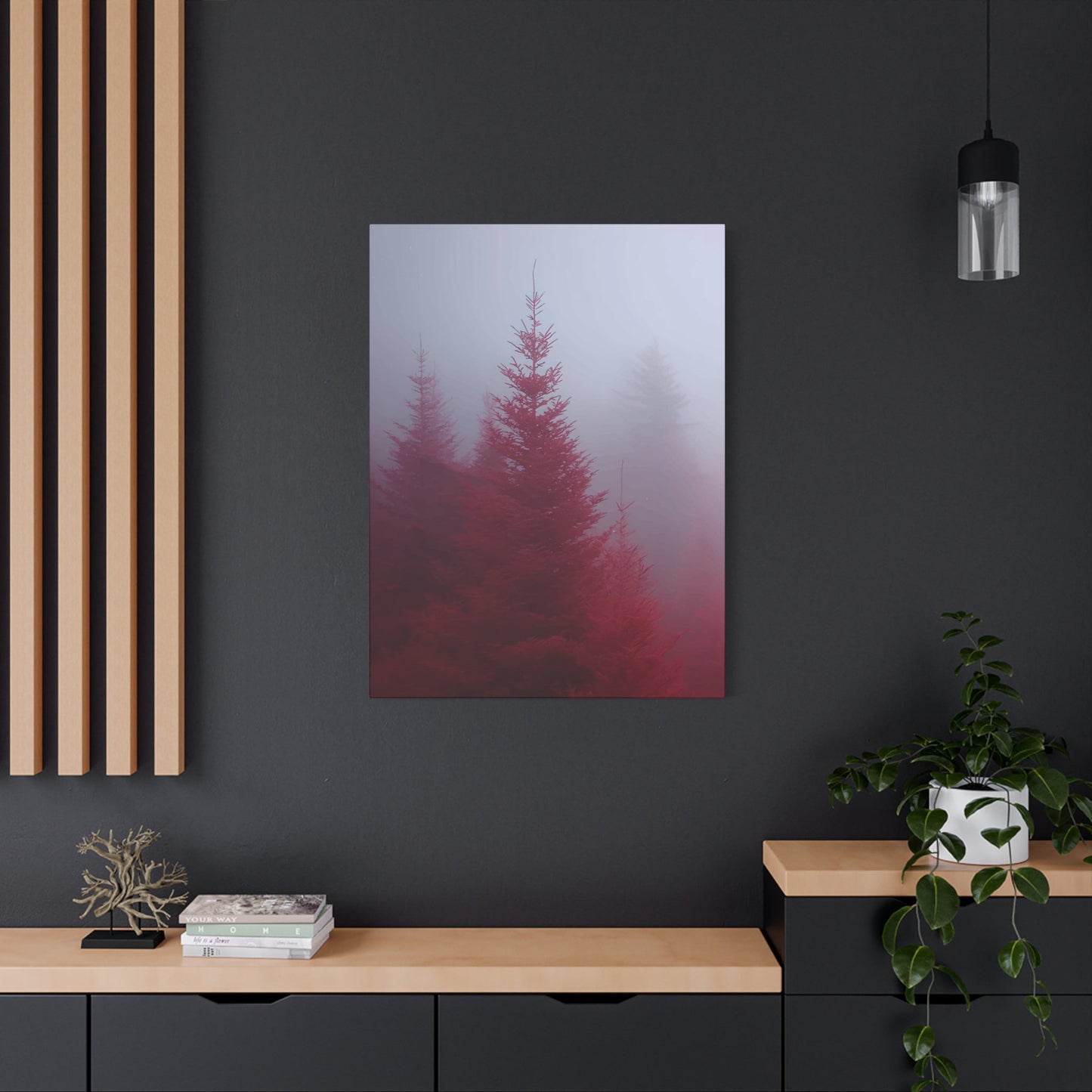Transform Your Home with Captivating Red Tree Wall Art: Complete Styling Guide
Red tree wall art represents one of the most powerful and transformative decorative elements available to homeowners and decorators today. This vibrant artistic choice combines the natural beauty of trees with the bold, energizing qualities of red hues, creating pieces that serve as both visual anchors and emotional catalysts in any room. The appeal of red tree artwork extends far beyond simple decoration, offering a sophisticated way to inject personality, warmth, and dynamic energy into living environments while maintaining an connection to the natural world.
The versatility of red tree wall art makes it suitable for numerous decorating styles and room types, from contemporary urban lofts to traditional country homes. Whether rendered in abstract interpretations or realistic depictions, these artworks possess an inherent ability to command attention while complementing existing furnishings and color schemes. The rich symbolism associated with trees, combined with the psychological impact of red coloration, creates artwork that resonates on multiple levels with viewers and residents alike.
Understanding how to effectively incorporate red tree wall art into your home requires consideration of various factors including room size, lighting conditions, existing color palettes, and personal aesthetic preferences. This comprehensive guide explores every aspect of selecting, placing, and styling red tree artwork to achieve maximum visual impact and emotional satisfaction. From choosing between abstract and realistic styles to determining the ideal rooms for display, each element contributes to creating harmonious and inspiring living environments.
Energizing Your Home Environment with Red Tree Prints
Red tree prints possess an extraordinary capacity to transform the energy and atmosphere of any room through their bold color choices and natural imagery. The vibrant red tones immediately draw the eye and create a sense of vitality that can invigorate even the most subdued decorating schemes. This energizing effect stems from the psychological associations people have with both the color red and tree imagery, combining feelings of passion, strength, and growth with the grounding presence of nature.
When strategically placed throughout a home, red tree prints can establish visual flow and continuity while maintaining individual room character. The warm undertones in red hues complement both cool and warm color schemes, making these prints remarkably adaptable to various decorating approaches. In rooms where natural light is limited, red tree artwork can compensate by adding warmth and creating the illusion of sunlight filtering through branches.
The energizing properties of red tree prints extend beyond visual impact to influence mood and behavior patterns. Research in color psychology suggests that red hues can increase energy levels, stimulate conversation, and create feelings of excitement and enthusiasm. When combined with the calming, grounding influence of tree imagery, the result is artwork that energizes without overwhelming, creating balanced emotional responses that enhance daily living experiences.
Different shades and intensities of red in tree artwork produce varying energetic effects. Deep burgundy and wine-colored trees create sophisticated, cozy atmospheres perfect for intimate gatherings and relaxation. Bright scarlet and cherry red trees generate more dynamic energy suitable for active areas like kitchens, dining rooms, and home offices. Understanding these nuances allows for precise control over the emotional tone of each room through careful artwork selection.
The positioning and lighting of red tree prints significantly influence their energizing potential. Placing these artworks where they catch natural light enhances their vibrancy and creates interesting shadow patterns throughout the day. Artificial lighting can be adjusted to emphasize certain aspects of the artwork during evening hours, maintaining the energizing effect even after sunset. Strategic placement near seating areas or frequently traveled pathways ensures maximum exposure and impact.
Combining multiple red tree prints of varying sizes and styles can create gallery walls that serve as powerful energy centers within rooms. This approach allows for layered storytelling through art while maintaining color cohesion. The key is balancing different elements to avoid overwhelming the environment while ensuring each piece contributes to the overall energizing effect desired.
Abstract versus Realistic Red Tree Canvas Art Approaches
The choice between abstract and realistic red tree canvas art fundamentally shapes the artistic impact and decorating possibilities within any room. Abstract interpretations offer freedom from literal representation, allowing artists to explore color, form, and texture in ways that emphasize emotional response over botanical accuracy. These pieces often feature bold brushstrokes, geometric elements, and innovative color combinations that push the boundaries of traditional tree imagery while maintaining recognizable organic forms.
Realistic red tree artwork focuses on accurate representation of natural tree structures, bark textures, and foliage patterns while incorporating the dramatic color choices that define this art category. These pieces appeal to viewers who appreciate detailed craftsmanship and natural beauty, offering familiarity and comfort through recognizable imagery. The realism allows for deeper connection with nature themes while the red coloration provides the desired visual impact and energy.
Abstract red tree art works exceptionally well in contemporary and modern decorating schemes where clean lines, bold colors, and artistic expression take precedence over traditional representations. These pieces can serve as conversation starters and artistic focal points that reflect the homeowner's appreciation for creative interpretation and modern aesthetics. The abstract nature allows for multiple interpretations, making the artwork personally meaningful to different viewers in unique ways.
Realistic red tree canvas art complements traditional, transitional, and rustic decorating styles where natural imagery and recognizable forms are valued. These pieces can evoke specific memories of autumn landscapes, forest walks, or seasonal changes, creating emotional connections that enhance the comfort and warmth of home environments. The realistic approach often includes detailed backgrounds, atmospheric effects, and seasonal elements that add depth and storytelling to the artwork.
The scale and complexity of abstract versus realistic red tree art can vary dramatically, affecting their suitability for different room sizes and viewing distances. Abstract pieces often work well as large statement works where bold forms and colors can be appreciated from various angles and distances. Realistic artwork may benefit from closer viewing to appreciate fine details, making them suitable for intimate settings where viewers can examine the craftsmanship and technique.
Mixing abstract and realistic red tree artwork within the same decorating scheme can create dynamic and sophisticated displays that showcase artistic appreciation and personal taste. This approach requires careful consideration of color harmony, scale relationships, and thematic connections to ensure cohesive results. The contrast between styles can highlight the unique qualities of each approach while demonstrating the versatility of red tree art as a decorating element.
Modern printing techniques and canvas materials allow both abstract and realistic red tree art to maintain vibrancy and detail over time. Understanding the differences in printing requirements, color accuracy, and texture reproduction helps ensure optimal results regardless of artistic style chosen. Quality considerations become particularly important when selecting large-scale pieces intended to serve as room focal points.
Optimal Room Selection for Red Tree Wall Art Display
Determining the most suitable rooms for red tree wall art requires careful consideration of room function, lighting conditions, traffic patterns, and existing decorative elements. Living rooms present ideal opportunities for displaying red tree artwork due to their role as gathering places where visual impact and conversation pieces are most appreciated. The generous wall areas typical in living rooms accommodate various artwork sizes, from intimate pieces above seating areas to dramatic statement walls that define entire room sections.
Dining rooms benefit significantly from red tree wall art placement, as the warm, energizing qualities of red hues can stimulate appetite and encourage lively dinner conversations. The formal nature of many dining rooms pairs well with sophisticated red tree artwork that demonstrates artistic appreciation while maintaining elegant atmosphere. Strategic placement ensures artwork remains visible during meals without competing with table settings or creating visual distractions from dining experiences.
Bedrooms require more careful consideration when incorporating red tree wall art, as the energizing properties of red may interfere with relaxation and sleep patterns for some individuals. However, deeper red tones and more muted artistic interpretations can work beautifully in master bedrooms, creating romantic and cozy atmospheres. Placement above headboards or on accent walls allows for visual impact without overwhelming the restful environment necessary for quality sleep.
Home offices and studies can greatly benefit from the energizing and inspiring qualities of red tree wall art. The combination of natural imagery and vibrant color can stimulate creativity, maintain energy levels during long work sessions, and provide visual relief from computer screens and paperwork. Positioning artwork where it can be easily viewed during breaks helps maintain the psychological benefits throughout the workday.
Kitchens and breakfast areas are excellent locations for red tree wall art, particularly pieces that incorporate warm red tones reminiscent of autumn harvest themes. The active nature of kitchen environments pairs well with the energizing qualities of red artwork, while tree imagery can soften the hard surfaces and mechanical elements typical in kitchen design. Proper placement away from cooking areas protects artwork from heat and moisture damage.
Hallways and entryways provide unique opportunities for creating dramatic first impressions with red tree wall art. These transitional areas can accommodate bold artistic statements that set the tone for entire homes while guiding visitors through different living areas. The vertical nature of many hallways suits tall, narrow red tree compositions that draw the eye upward and create sense of movement through the home.
Bathrooms present challenging environments for artwork due to humidity and temperature fluctuations, but properly sealed and framed red tree prints can add unexpected sophistication to these utilitarian areas. The warm tones can counteract the cold feel of tile and fixtures while creating spa-like atmospheres that enhance daily routines. Careful material selection ensures longevity in these demanding conditions.
Harmonizing Red Tree Art with Neutral Decorating Schemes
Neutral decorating schemes provide excellent backdrops for red tree wall art, allowing the vibrant colors and natural imagery to serve as dynamic focal points without competing with busy patterns or conflicting color choices. The relationship between neutral backgrounds and red tree artwork creates balanced compositions that feel both sophisticated and approachable, suitable for various decorating styles and personal preferences.
Beige, cream, and warm white backgrounds enhance the warm undertones present in many red tree artworks, creating harmonious color relationships that feel natural and inviting. These neutral tones allow the reds to appear rich and saturated without overwhelming the room, while the tree imagery provides organic shapes that soften the geometric lines often found in modern furnishings and architectural elements.
Gray neutral schemes offer different possibilities for red tree art integration, with the contrast between cool grays and warm reds creating dramatic and sophisticated visual effects. Light gray backgrounds make red tree artwork appear more vibrant and attention-grabbing, while darker gray tones can create moody, intimate atmospheres that emphasize the artwork's emotional impact. Understanding these relationships helps in selecting appropriate red tones for specific gray color schemes.
Incorporating red tree artwork into neutral decorating schemes requires consideration of accent colors and accessories that can bridge the gap between the neutral background and vibrant artwork. Throw pillows, area rugs, lamp shades, and decorative objects in complementary colors can create cohesive color stories that connect the artwork to the overall decorating scheme. These accent pieces should support rather than compete with the red tree artwork for visual attention.
Texture plays a crucial role in successful integration of red tree art with neutral decorating schemes. Neutral backgrounds often rely on varied textures to create visual interest, and the addition of canvas or paper textures from red tree artwork contributes to this layered approach. Understanding how different printing surfaces and framing materials interact with existing textures helps create sophisticated and unified decorating schemes.
The scale of red tree artwork becomes particularly important in neutral decorating schemes, as the artwork often serves as the primary source of color and visual interest. Oversized pieces can anchor entire room designs, while collections of smaller works can create gallery walls that provide ongoing visual engagement. The neutral background allows for flexibility in artwork arrangement and easy updating as tastes and preferences evolve.
Lighting design takes on increased importance when displaying red tree artwork against neutral backgrounds, as proper illumination can enhance color vibrancy and create dramatic shadow effects. Track lighting, picture lights, and strategic placement of table and floor lamps can highlight artwork while maintaining comfortable ambient lighting levels throughout the room. The interaction between artificial light and red pigments requires careful consideration to maintain color accuracy and visual appeal.
Natural light sources significantly impact how red tree artwork appears against neutral backgrounds throughout different times of day and seasons. North-facing rooms with consistent, cool natural light may require warmer artificial lighting to maintain the artwork's warm red tones, while south-facing rooms with abundant warm natural light may enhance the artwork's vibrancy without additional lighting support. Understanding these relationships helps optimize artwork placement and supplementary lighting design.
Professional Framing Techniques for Red Tree Canvas Prints
Professional framing represents a critical factor in maximizing the visual impact and longevity of red tree canvas prints, requiring careful consideration of frame materials, mounting techniques, and protective elements that complement the artwork while ensuring proper preservation. The framing process begins with understanding the specific characteristics of canvas prints, including their flexibility, texture, and expansion properties that differ significantly from traditional paper-based artworks.
Frame selection for red tree canvas prints should complement both the artwork's color palette and the intended decorating scheme without overwhelming the artistic content. Traditional wood frames in rich walnut, cherry, or mahogany tones can enhance the natural themes present in tree artwork while adding warmth and sophistication to the display. The grain patterns and natural variations in wood frames create interesting textural contrasts with the smooth canvas surface while supporting the organic themes of the artwork.
Metal frames offer different aesthetic possibilities for red tree canvas prints, with options ranging from sleek contemporary profiles to ornate traditional designs. Black or dark bronze frames can create dramatic contrasts that make red tones appear more vibrant, while gold or warm-toned metal frames can complement the warm undertones often present in red tree artwork. The key is selecting frame finishes that enhance rather than compete with the artwork's color story.
Floating frame techniques have gained popularity for canvas prints, creating the impression that artwork hovers within the frame rather than being pressed against it. This approach particularly suits red tree canvas prints by allowing the full canvas edge to remain visible, creating shadow lines that add depth and dimension to the display. Floating frames work especially well with gallery-wrapped canvases where the image continues around the edges.
Matting considerations for red tree canvas prints differ from traditional framed artwork, as canvas pieces often benefit from direct mounting without intervening mat materials. However, when mats are desired for aesthetic reasons, selecting colors that complement the red tree imagery becomes crucial. Neutral mats in cream, warm white, or light gray can provide breathing room around the artwork while maintaining focus on the red tree elements.
Glazing options for framed red tree canvas prints require balancing protection with visual clarity and light reflection concerns. Standard glass provides basic protection but can create unwanted reflections that obscure artwork details. Museum-quality glazing with anti-reflective coatings eliminates reflection issues while providing superior UV protection that prevents color fading over time. Understanding the trade-offs between cost and protection helps determine appropriate glazing choices.
Conservation framing techniques become particularly important for valuable or sentimental red tree canvas prints, requiring acid-free materials, proper spacing techniques, and climate considerations that ensure long-term preservation. These methods may include using conservation-grade mounting materials, ensuring adequate air circulation behind the artwork, and selecting frame materials that won't off-gas harmful chemicals over time.
Custom framing allows for precise tailoring of frame designs to specific red tree canvas prints and decorating requirements. Professional framers can recommend appropriate materials, proportions, and techniques based on the artwork's specific characteristics and intended display environment. This personalized approach ensures optimal results that protect the investment while achieving desired aesthetic goals.
Seasonal Decorating Themes with Red Tree Wall Art
Red tree wall art naturally aligns with seasonal decorating themes, particularly autumn celebrations where the warm red tones echo the natural color changes occurring in deciduous trees. This seasonal connection allows homeowners to create decorating schemes that feel connected to natural rhythms while maintaining year-round appeal through careful styling and complementary decorative elements.
Autumn decorating themes featuring red tree wall art can incorporate traditional seasonal elements like pumpkins, gourds, and harvest displays while using the artwork as a sophisticated backdrop that elevates the overall aesthetic. The key is balancing obvious seasonal references with subtler decorative choices that allow the red tree artwork to remain relevant throughout the year. Rich textures, warm lighting, and natural materials can enhance the autumn theme without creating overly literal interpretations.
Winter seasonal themes can successfully incorporate red tree artwork by emphasizing the contrast between bare branches and vibrant red elements, creating dramatic compositions that reflect the stark beauty of winter landscapes. Adding metallic accents, crystal elements, and cool-toned accessories can create sophisticated winter displays where red tree artwork provides warmth and visual interest against cooler seasonal colors.
Spring decorating themes benefit from red tree artwork that includes emerging foliage or flowering elements, creating connections between indoor artwork and outdoor seasonal changes. Fresh green accents, floral arrangements, and lighter textiles can complement red tree artwork while celebrating renewal and growth themes associated with spring. The warm red tones provide continuity from winter decorating while welcoming the energy of the new growing season.
Summer seasonal themes can utilize red tree artwork as stable decorative anchors while surrounding elements shift to reflect the active, outdoor-focused nature of summer living. Brighter accent colors, lighter fabrics, and increased natural light can create fresh interpretations of red tree artwork without requiring complete redecorating. The key is maintaining the artwork's impact while allowing seasonal accessories to provide variety and freshness.
Transitional decorating approaches allow red tree wall art to serve as consistent elements while seasonal accessories and accent pieces change throughout the year. This strategy maximizes the investment in quality artwork while providing opportunities for creative seasonal expression through smaller, more affordable decorative updates. Understanding how different seasonal elements interact with red tree artwork helps create cohesive year-round decorating schemes.
Holiday decorating can incorporate red tree wall art as sophisticated backdrops for festive displays, with the artwork's warm red tones complementing traditional holiday color schemes while avoiding overly commercial or temporary appearances. The natural tree imagery connects with holiday traditions while maintaining artistic integrity that extends beyond specific holiday periods.
Cultural and regional seasonal traditions can influence how red tree wall art is styled throughout the year, with different geographic areas emphasizing various seasonal characteristics and color preferences. Understanding local traditions and climate patterns helps create seasonally appropriate displays that feel authentic and connected to the immediate environment while showcasing the versatility of red tree artwork.
Adapting Red Tree Art for Modern and Rustic Interior Styles
Modern interior design styles embrace red tree wall art through clean presentation methods, bold scale choices, and sophisticated color coordination that emphasizes the artwork's contemporary artistic qualities while maintaining the sleek, uncluttered aesthetic characteristic of modern decorating. The key lies in selecting red tree pieces that demonstrate strong graphic qualities, clear color relationships, and artistic techniques that align with modern art movements and contemporary design principles.
Contemporary modern interiors benefit from large-scale red tree artwork that can serve as dramatic focal points without requiring additional decorative support. These oversized pieces work particularly well in open-concept living areas where they can be viewed from multiple angles and distances. The bold scale typical of modern decorating allows red tree artwork to make strong visual statements while maintaining the simplified, uncluttered appearance modern design demands.
Minimalist approaches to modern decorating can successfully incorporate red tree wall art by treating the pieces as essential design elements rather than decorative additions. This requires careful selection of artwork that demonstrates exceptional artistic quality and visual impact, as these pieces must justify their presence within the intentionally sparse modern aesthetic. The natural imagery provides organic relief from geometric modern furnishings while the red coloration adds necessary warmth to potentially cold modern materials.
Rustic interior design styles naturally accommodate red tree wall art through the shared emphasis on natural themes, warm color palettes, and connection to outdoor environments. The challenge lies in selecting red tree artwork that complements rustic materials and textures without appearing too refined or polished for the deliberately casual, authentic atmosphere rustic decorating seeks to achieve.
Traditional rustic decorating can incorporate red tree artwork through rough-hewn frames, natural mounting materials, and positioning that integrates the artwork with architectural elements like exposed beams, stone fireplaces, or wood-paneled walls. The goal is creating displays that feel indigenous to the rustic environment rather than imposed upon it from outside design influences.
Modern rustic or contemporary rustic decorating styles provide opportunities to bridge the gap between sophisticated red tree artwork and relaxed rustic atmospheres. This hybrid approach can accommodate higher-quality prints and professional framing while maintaining the comfortable, approachable character essential to rustic design success. The key is balancing refinement with authenticity.
Industrial modern decorating styles can successfully incorporate red tree artwork as softening elements that counteract the hard edges and cool materials typical of industrial design. The organic tree shapes and warm red colors provide necessary contrast to steel, concrete, and glass elements while maintaining the bold, dramatic aesthetic industrial design demands. Strategic placement and appropriate scaling ensure the artwork enhances rather than conflicts with industrial elements.
Mid-century modern decorating styles align particularly well with red tree artwork, as both emphasize bold color choices, natural themes, and artistic expression. The warm wood tones common in mid-century furniture complement red tree artwork beautifully, while the clean lines and geometric elements provide interesting contrast to organic tree shapes. Understanding the color preferences and artistic sensibilities of mid-century design helps ensure successful integration.
Transitional decorating styles that blend traditional and contemporary elements can utilize red tree artwork as bridging devices that connect different stylistic influences within single rooms or throughout entire homes. The natural subject matter appeals to traditional sensibilities while contemporary artistic techniques and bold color choices satisfy modern preferences. This versatility makes red tree artwork particularly valuable in transitional decorating schemes.
Creating Powerful Focal Points with Red Tree Prints
Strategic placement of red tree prints can transform ordinary walls into commanding focal points that anchor entire room designs while providing visual destinations that guide the eye and create hierarchy within decorating schemes. The process begins with understanding how focal points function within room layouts and selecting appropriate wall locations that can support the visual weight and attention-grabbing qualities inherent in red tree artwork.
Large-scale red tree prints work exceptionally well as primary focal points in living rooms, particularly when positioned above major seating arrangements or fireplace mantels where they can be easily viewed and appreciated. The size and color intensity of these pieces naturally draw attention while the tree imagery provides organic visual relief from geometric furniture shapes and architectural elements. Proper scaling ensures the artwork commands attention without overwhelming the surrounding furnishings.
Gallery wall arrangements featuring multiple red tree prints can create expansive focal points that cover significant wall areas while maintaining visual cohesion through consistent color themes and complementary framing choices. This approach allows for varied sizes, artistic styles, and composition arrangements that create ongoing visual interest while demonstrating sophisticated artistic appreciation. The key is maintaining enough visual connection between pieces to read as unified displays rather than random collections.
Lighting design plays a crucial role in establishing red tree prints as effective focal points, with proper illumination enhancing color vibrancy while creating dramatic shadow effects that add depth and dimension to flat wall surfaces. Track lighting, picture lights, and strategically placed accent lamps can highlight artwork while maintaining appropriate ambient lighting levels throughout the room. The interaction between artificial light and red pigments requires careful consideration to maintain color accuracy.
Architectural integration can enhance the focal point potential of red tree prints by incorporating the artwork into built-in display systems, alcoves, or specially designed wall treatments that emphasize the artwork's importance within the overall room design. This approach requires coordination between artwork selection and architectural planning but can create sophisticated, custom appearances that elevate the entire room's design quality.
Furniture arrangement should support and enhance focal points created by red tree prints, with seating orientations, traffic patterns, and accessory placement all contributing to the artwork's visual prominence. Sofas, chairs, and tables positioned to face or complement red tree artwork create natural viewing opportunities while reinforcing the hierarchical importance of the focal point within the room's functional layout.
Color coordination throughout the room should support focal points created by red tree prints without competing for visual attention or creating chaotic color relationships. Accent pieces, textiles, and accessories in complementary colors can create color stories that connect the artwork to the overall decorating scheme while maintaining the artwork's role as the primary color statement within the room.
Scale relationships between red tree prints and surrounding elements significantly impact their effectiveness as focal points, with proper proportions ensuring the artwork appears neither lost among larger furniture pieces nor overwhelming in relation to room size. Understanding these relationships helps determine appropriate artwork sizes and positioning that maximize visual impact while maintaining comfortable, livable environments.
Integrating Red Tree Art with Nature-Inspired Decorative Elements
Nature-inspired decorating themes provide natural partners for red tree wall art, creating cohesive design schemes that celebrate organic beauty while incorporating the bold color statements that make red tree artwork so visually compelling. The key lies in balancing literal natural elements with stylized artistic interpretations to avoid overly themed appearances while maintaining sophisticated, adult-friendly environments.
Live plants and greenery create beautiful contrast relationships with red tree artwork, with the fresh green foliage providing complementary color relationships that enhance both the artwork and living plant displays. Large-scale plants like fiddle leaf figs, rubber trees, or bird of paradise specimens can create dramatic compositions alongside red tree artwork, while smaller plants in stylish containers can provide subtle natural connections throughout the room.
Natural wood furniture and accessories complement red tree artwork through shared material connections and warm color relationships that feel harmonious and authentic. Raw or lightly finished wood pieces allow the natural grain patterns and color variations to interact visually with red tree imagery, creating layered natural themes that feel sophisticated rather than rustic. The key is selecting wood tones that enhance rather than compete with the red color palette.
Stone and mineral elements can provide grounding influences that balance the vibrant energy of red tree artwork while maintaining natural theme connections. River rocks, geodes, fossil specimens, and polished stone accessories can create interesting textural contrasts while reinforcing the natural world connections inherent in tree imagery. Strategic placement ensures these elements support rather than detract from the artwork's visual impact.
Natural fiber textiles including wool, cotton, linen, and jute can provide tactile interest and color support for red tree artwork while maintaining organic theme consistency. Area rugs, throw pillows, window treatments, and upholstery fabrics in natural materials create layered compositions that feel authentic and comfortable while highlighting the artwork's color and compositional qualities.
Water features and aquatic elements can create unexpected but successful partnerships with red tree artwork, particularly in contemporary decorating schemes where contrasting natural elements are used to create dynamic visual relationships. Tabletop fountains, aquarium displays, or water-themed accessories can provide cooling visual balance to the warm energy of red tree artwork while maintaining natural theme connections.
Seasonal natural elements can provide changing displays that keep nature-inspired decorating schemes fresh and engaging throughout the year while maintaining red tree artwork as consistent focal points. Branch arrangements, flowering stems, seasonal fruits, and foliage displays can reflect outdoor seasonal changes while complementing the timeless appeal of red tree artwork through careful color and scale coordination.
Natural lighting optimization becomes particularly important in nature-inspired decorating schemes featuring red tree artwork, with window treatments and artificial lighting designed to enhance both the artwork and natural decorative elements. Understanding how natural light changes throughout days and seasons helps optimize displays while protecting artwork from harmful UV exposure that can cause color fading over time.
Creative DIY Red Tree Painting Projects and Techniques
DIY red tree painting projects offer opportunities for personal artistic expression while creating custom artwork perfectly suited to specific decorating needs and color preferences. These projects can range from simple beginner techniques to complex artistic endeavors, allowing individuals with varying skill levels to participate in creating personalized red tree artwork for their homes.
Basic acrylic painting techniques provide accessible entry points for DIY red tree projects, with acrylic paints offering forgiving working properties, vibrant color options, and easy cleanup that make them ideal for beginners. Simple tree silhouettes against graduated background colors can create striking effects without requiring advanced artistic skills, while different brush techniques and color blending methods can add sophistication to basic compositions.
Watercolor approaches to DIY red tree painting create different aesthetic qualities characterized by transparent layers, soft color transitions, and organic flow patterns that complement the natural subject matter. Watercolor techniques can produce atmospheric effects and subtle color variations that feel particularly appropriate for tree imagery, though the medium requires different handling techniques and timing considerations compared to acrylic paints.
Mixed media approaches to DIY red tree artwork can incorporate various materials and techniques to create unique textural effects and visual interest. Combining paints with textural mediums, fabric elements, natural materials, or collage techniques can produce one-of-a-kind pieces that reflect personal creative vision while maintaining the visual impact necessary for effective wall art displays.
Abstract interpretation techniques allow DIY artists to explore red tree themes without requiring realistic rendering skills, focusing instead on color relationships, compositional balance, and emotional expression. These approaches can produce sophisticated artwork that demonstrates artistic sensibility while remaining accessible to individuals without formal training in realistic drawing and painting techniques.
Digital painting and printing combinations can extend DIY red tree projects beyond traditional media, allowing for experimentation with digital tools followed by high-quality printing on various materials including canvas, paper, or fabric. This hybrid approach combines the immediacy and flexibility of digital creation with the physical presence and texture of traditional artwork materials.
Collaborative family projects featuring red tree themes can create meaningful artwork while providing educational opportunities about color theory, composition, and artistic techniques. These projects can accommodate different skill levels within families while producing artwork that holds special significance due to the collaborative creation process and personal investment involved.
Advanced techniques for experienced DIY artists can include complex composition planning, sophisticated color mixing, textural experimentation, and professional finishing methods that produce gallery-quality results. Understanding proper canvas preparation, paint application techniques, and finishing procedures ensures DIY red tree artwork meets professional standards for longevity and visual impact.
Tool and material selection significantly impacts the success of DIY red tree painting projects, with proper brushes, paints, canvases, and workspace setup contributing to both the creative process and final results. Understanding the characteristics and capabilities of different materials helps ensure project success while avoiding frustrations that can discourage continued artistic exploration.
Understanding the Psychological Impact of Red in Tree Artwork
The psychological effects of red coloration in tree artwork extend beyond simple aesthetic preferences, tapping into deep-seated emotional and physiological responses that can significantly influence mood, energy levels, and overall psychological well-being within home environments. Understanding these effects helps homeowners make informed decisions about incorporating red tree artwork into their living areas while maximizing positive benefits and avoiding potential negative impacts.
Color psychology research indicates that red hues can increase heart rate, stimulate the nervous system, and promote feelings of excitement, passion, and energy. When applied to tree imagery, these physiological effects combine with the calming, grounding associations of trees to create complex emotional responses that can be both energizing and comforting simultaneously. This unique combination makes red tree artwork particularly valuable for creating balanced psychological environments.
The intensity and saturation of red tones in tree artwork significantly influence their psychological impact, with bright, saturated reds producing more dramatic stimulating effects while deeper, more muted red tones create warmer, more intimate psychological responses. Understanding these nuances allows for precise control over the emotional atmosphere created through artwork selection and placement decisions.
Cultural associations with red coloration can influence individual psychological responses to red tree artwork, with different cultural backgrounds attributing various symbolic meanings to red hues. Western cultures often associate red with passion, energy, and power, while Eastern cultures may emphasize prosperity, good fortune, and celebration. Awareness of these cultural influences helps ensure artwork choices align with intended psychological effects.
Seasonal psychological effects can be enhanced or counteracted through strategic use of red tree artwork, with the warm red tones potentially offsetting seasonal affective symptoms during darker winter months while complementing the natural energy increases associated with spring and summer seasons. This therapeutic potential makes red tree artwork valuable for maintaining psychological well-being throughout annual cycles.
Individual personality types may respond differently to red tree artwork, with extroverted individuals often embracing the bold, energizing qualities while more introverted personalities might prefer subtler applications or smaller doses of red tree imagery. Understanding personal psychological preferences helps ensure artwork selections contribute positively to individual well-being rather than creating unwanted stimulation or discomfort.
Room function considerations become particularly important when evaluating the psychological impact of red tree artwork, with energizing red effects being beneficial in active areas like home offices, kitchens, and exercise rooms while potentially interfering with relaxation needs in bedrooms and meditation areas. Matching artwork psychological effects to intended room uses optimizes both functionality and comfort.
Long-term psychological adaptation to red tree artwork can occur over time, with initial strong responses potentially diminishing as individuals become accustomed to the visual stimulation. This adaptation process suggests the importance of selecting red tree artwork that maintains appeal over extended periods rather than relying solely on immediate dramatic impact for ongoing satisfaction.
The size and placement of red tree artwork influence psychological impact intensity, with larger pieces and central positioning creating stronger effects while smaller pieces or peripheral placement allow for subtler psychological influences. Understanding these relationships helps optimize artwork selection and positioning for desired psychological outcomes while maintaining comfortable living environments.
Red Tree Wall Art as Meaningful Gift Options
Red tree wall art represents thoughtful gift choices that combine aesthetic appeal with symbolic meaning, making them suitable for various gift-giving occasions while demonstrating consideration for recipients' decorating needs and personal tastes. The universal appeal of tree imagery combined with the bold sophistication of red coloration creates artwork that can suit diverse decorating styles and personal preferences while maintaining significant visual impact.
Housewarming gifts featuring red tree artwork acknowledge the significance of new home establishment while providing decorative elements that can help personalize and energize new living environments. The symbolic associations of trees with growth, stability, and rootedness make them particularly appropriate for celebrating new home ownership or major relocations. Selecting artwork that complements common decorating styles ensures broad appeal and practical usefulness.
Wedding and anniversary gifts in red tree artwork can symbolize growing relationships, enduring love, and shared life journeys while providing couples with meaningful decorative elements for their shared homes. The warm red tones traditionally associated with romance and passion make these pieces particularly appropriate for celebrating relationship milestones while the tree imagery represents strength and longevity.
Holiday gifts featuring red tree artwork can provide lasting decorative value that extends far beyond specific holiday seasons while still acknowledging festive traditions through color choices and seasonal themes. These pieces offer alternatives to temporary holiday decorations by providing year-round aesthetic value that recalls holiday warmth and celebration throughout the entire year.
Graduation gifts in red tree artwork can symbolize personal growth, achievement, and future potential while providing young adults with sophisticated decorative pieces appropriate for first apartments, dormitory rooms, or professional environments. The energizing qualities of red tones can support motivation and ambition while tree imagery represents continued learning and development.
Retirement gifts featuring red tree artwork can celebrate life transitions while acknowledging the wisdom and experience accumulated over working careers. The stable, enduring qualities associated with trees make them appropriate symbols for this life stage while red coloration can represent continued vitality and enthusiasm for new adventures and experiences.
Corporate and professional gifts incorporating red tree artwork can demonstrate appreciation while providing office and workplace decorations that enhance professional environments. The sophisticated appearance of quality red tree artwork makes it appropriate for business settings while the energizing color qualities can contribute to productive, positive workplace atmospheres.
Personalization options for red tree artwork gifts can include custom framing, specific size selections, or artistic modifications that reflect recipients' particular preferences or decorating needs. Many artists and retailers offer customization services that can adapt standard red tree designs to specific color schemes, size requirements, or personal symbolic preferences.
Presentation and packaging considerations for red tree artwork gifts should protect the pieces during transport while building anticipation and demonstrating the giver's thoughtfulness. Professional packaging, protective materials, and attractive presentation can enhance the gift-giving experience while ensuring artwork arrives in perfect condition ready for immediate display.
Optimizing Red Tree Art Display in Bedrooms and Living Rooms
Bedroom applications for red tree wall art require careful consideration of the psychological and physiological effects of red coloration on sleep quality and relaxation patterns, with successful integration depending on color intensity, placement strategies, and complementary decorating elements that balance stimulation with comfort. The key lies in harnessing the warmth and energy of red tree artwork while avoiding overstimulation that might interfere with rest and relaxation needs.
Master bedroom displays can successfully incorporate red tree artwork through strategic placement above headboards, on accent walls, or in seating areas where the artwork can be appreciated without dominating the sleeping area's visual field. Deeper red tones and more muted artistic interpretations work particularly well in bedrooms, providing visual interest and romantic warmth without creating excessive stimulation before bedtime.
Guest bedroom applications for red tree artwork can create welcoming, energizing environments that help visitors feel comfortable and appreciated while demonstrating the host's attention to decorating details. The bold visual impact of red tree pieces can transform simple guest rooms into memorable, impressive accommodations that reflect hospitality and personal style without requiring extensive decorating investments.
Living room displays represent ideal opportunities for showcasing red tree wall art due to the social, active nature of these environments where visual impact and conversation pieces are most valued. The generous wall areas and varied seating arrangements typical in living rooms provide excellent viewing opportunities while accommodating various artwork sizes and arrangement options.
Conclusion
Red tree wall art offers a striking and vibrant way to transform your home by infusing it with warmth, energy, and natural beauty. The vivid red hues paired with the organic forms of trees create a captivating focal point that immediately draws the eye and elevates any living space. Whether depicted in bold abstracts, delicate watercolors, or detailed photographic prints, red tree art combines the power of nature with a dramatic splash of color, making it a versatile and dynamic design choice.
One of the key appeals of red tree wall art is its ability to evoke strong emotions and moods. Red symbolizes passion, vitality, and strength, while trees represent growth, stability, and life. Together, these elements create artwork that is both visually stimulating and deeply symbolic. This dual impact allows red tree art to resonate with a wide range of personal styles and interior themes, from contemporary and eclectic to rustic and traditional.
In terms of styling, red tree wall art can serve as a bold centerpiece or a complementary accent. Large-scale pieces create dramatic statements on feature walls, perfect for living rooms or entryways, while smaller prints can add pops of color to bedrooms, offices, or cozy nooks. Pairing red tree art with neutral tones like whites, greys, or beiges enhances its vibrancy, while combining it with earthy materials such as wood or leather adds warmth and texture to the space.

















